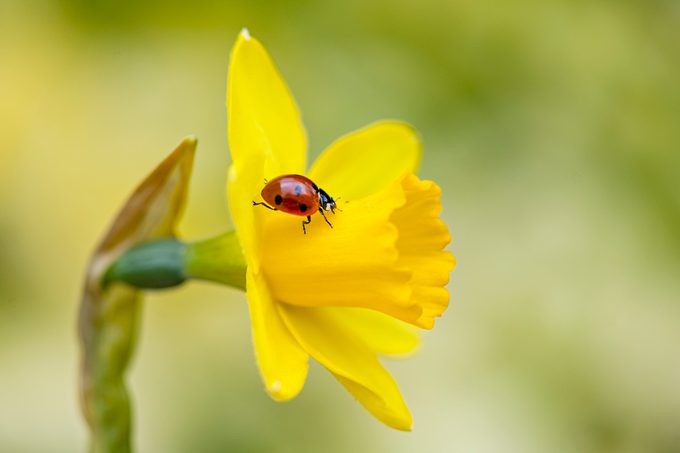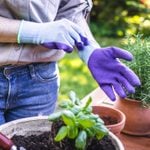10 Things Professional Gardeners Wish You Knew

Following the advice of professional gardeners can increase your chances of growing a flourishing garden that you and pollinators will enjoy.
Our editors and experts handpick every product we feature. We may earn a commission from your purchases.
The longer you garden, the more you learn how to help your plants flourish, draw in pollinators, yield a significant harvest and countless other valuable lessons. Listening to advice from the experts can give you a head start on the process.
The 10 tips below from professional gardeners are just the beginning. Follow them, and before long you’ll find yourself offering your own hard-earned advice and defining gardening terms to gardening newbies.
On This Page
Enrich Your Garden Soil Every Year Before You Plant
Make it part of your routine to add organic materials rich in nitrogen, carbon and other important nutrients to your garden soil before you plant your fruits and vegetables each spring. Shredded leaves, compost, manure, earthworm castings, and bark shavings all work well.
“Even though you may have great garden soil in your raised beds like I do, it’s important that you come back and amend those raised beds to replace the nutrients because the plants growing in the beds are continuing to take those nutrients out,” says Joe Gardener of Growing a Greener World, a champion of organic gardening practices. “Think of your raised beds like a bank account. The more deposits you make to the account, the healthier your account. If all you do is make withdrawals, eventually your account has no value. Your soil is just like that.”
Use Restraint When Planting Vegetables for the First Time
The expression, “Your eyes are bigger than your stomach,” certainly applies to vegetable gardening, especially if you’re a novice. Try not to overdo it by growing way more than you can maintain, harvest and consume.
Research horticulturist and trial manager of the UT Gardens-Jackson, Jason Reeves, says growing a huge harvest of tomatoes is harder to achieve than it looks, especially in warm climates like his.
“Don’t start with 25 kinds of tomatoes in your first garden — plant five instead,” he says. “They will keep you plenty busy with watering, weeding, picking off tomato hornworms and daily harvesting.”
Reeves has had great success with the All-America Selections winners and recommends them to gardeners looking for reliable varieties to start with.
Select the Right Plant for the Right Place
When I was first learning how to garden, my mother stressed the importance of choosing the right plant for the right place. She shared a book by the same name that has since been updated; it’s a helpful resource for new gardeners.
The idea is to match your plants to the growing conditions you actually have, not those you wish you had. Why fight Mother Nature when there are so many good options?
When I do garden coaching with homeowners in my local community, they’re sometimes frustrated that “nothing will grow in that spot.” Look to nature and you’ll find there’s a plant that will grow on virtually any shred of land, even if it seems inhospitable. It’s just a matter of matching the right plant to the right place.
Say you garden in heavy, wet clay soil. Research plants that will thrive in those conditions. Trying to make a plant that needs well-drained, dry soil grow there will be a waste of your time and resources. Garden smarter, not harder!
Do Your Research Before You Buy
Besides matching the right plants to the right places, it pays to thoroughly research the plants before you buy. Search for a reputable business to buy them. Then find out what time of year the plants are typically available, the best season to plant them, and whether any special soil amendments will be needed for planting.
By the way: The information on the plant label or found online isn’t always set in stone. Several factors come into play when this information is published, mainly regionality. Learn to decipher tomato plant tags.
The grower who published the information may be in a different climate than you. So in your landscape the plants might need more sun or shade, could mature to a smaller or larger size, and bloom at a slightly different time of year. Try to find information published by a source in a similar climate to yours. Plant trials at your local botanical garden are also a tremendous resource.
Plan Your Garden with Pollinators in Mind
To attract pollinators and keep them coming back, plan your garden so that something they enjoy is always in bloom. This takes some practice but can be achieved over time.
It’s normal for perennials to cycle in and out of bloom through the seasons. That’s why planting a mixed border using annuals, bulbs, perennials and shrubs is the easiest way to ensure there are always flowers for butterflies, bees and other pollinators to feed on.
If you notice gaps of a few weeks or more between plants in bloom in your garden, specifically seek out pollinator-friendly varieties that bloom at that time. You might also consider adding a few native host plants like milkweed to support pollinators through their entire life cycle.
Tend To Your New Trees
Third generation nursery owner John Steinkopf of Steinkopf Nursery in Michigan, has assisted thousands of people in selecting and planting trees. Consider these tips he offers his customers:
- Know your space before you buy. Do you have enough room for the 20-ft. tall tree you really want in that space? Are there power lines or roof overhangs in the way?
- Don’t plant large trees too close to your home’s foundation, because their roots can get into sewer lines and cause leaks in your basement. Small ornamental trees like weeping Japanese maples are safe to plant near your foundation.
- Don’t plant your tree too deeply. Take the tree out of the container or burlap and gently rub away the soil around the tree trunk to expose the root flare (the spot where the trunk and roots meet). When you plant, keep the root flare at or slightly above ground level.
- Water newly planted trees deeply to eliminate air pockets, then keep the soil moist but not wet the first season. Instead of watering on a schedule, water when they need it. Do it in the morning, if possible. Remember, heavier soils dry out more slowly than sandy ones.
- Spread a two- to three-inch layer of shredded hardwood or bark mulch around the base of your new tree, but don’t let it touch the trunk. That can invite insects and disease. The mulch will help conserve moisture and keep the soil cooler so that the roots will grow.
Sharpen and Sanitize Your Tools Before You Prune
One of the simplest ways to protect the health of your plants is to sharpen and sanitize your tools before you use them. If you know a plant is infected, sanitize your pruners before moving on to the next plant to avoid spreading the disease.
One example involves Hosta Virus X, a harmful and easily transmittable disease that can infect all types of hostas. It’s mainly spread by mechanical transmission, like when you prune one infected hosta, then move on to the next without sanitizing the tool. The disease rides along with the pruners.
Sharpening your pruners also gives a cleaner cut without tearing the bark or soft wood of your tree or shrub. Clean cuts are less likely to invite insects and diseases. A little effort spent on your tools before you begin can have a lasting impact.
Feed Your Plants
Just like people, plants need to be fed. Most of what they need comes from the minerals and nutrients found naturally in the soil. But, if you garden in containers or in sandy garden soil, some additional feeding is needed to help your plants thrive.
“Every time you water your containers, a bit of its nutrients are flushed out the drainage hole,” says Jessica DeGraaf, avid gardener and retail account manager for Proven Winners. “You can replace them by feeding your plants with water-soluble fertilizer once per week.”
This is especially important for flowering annuals that need consistent feeding to provide the energy for continuous blooming. Look for fertilizers that contain EDDHA iron chelate, an essential nutrient found in better quality plant foods.
Learn to Live With Insects
If you grow a garden, you will encounter insects of all kinds. Some are beneficial because they prey on harmful insects, like how ladybugs eat sap-sucking aphids. Other insects can cause problems by chewing holes in leaves and flowers or transmitting diseases. Unfortunately, they don’t come with signs on their backs, so it can be hard to know which are friends or foes.
If you want your garden to be a welcoming, healthy place for pollinating bees, butterflies, birds and other wildlife, choose organic or low impact solutions to manage insects, or simply learn to live with them. Don’t reach first for insecticides that can harm bees and infect earthworms. Birds that east those earthworms experience the harmful side effects.
Pick Japanese beetles off your roses by hand and knock them into a bucket of soapy water. Use a strong spray from your hose to blast aphids off your milkweed. Leave the roly-poly bugs (AKA pill bugs) alone so they can break down decaying organic matter. These amazing creatures are also instrumental in removing metal toxic ions from contaminated soil.
Try Something New Every Year
To really grow as a gardener, try something new every year. It can be a new plant, a different tool or a technique you’ve never attempted. It may not succeed, but you’ll arguably learn more from your failures and will do better next time.
Get comfortable with the fact that you aren’t in complete control of your garden — that’s Mother Nature’s job. A flash freeze in late spring may zap your flowering trees or flooding rains may wash out the new mulch you’ve laid on a path.
But more often than not, absolutely magical things will happen in your garden. Be a keen observer of nature and ride with the waves that it inevitably provides. Most of all, have fun!





